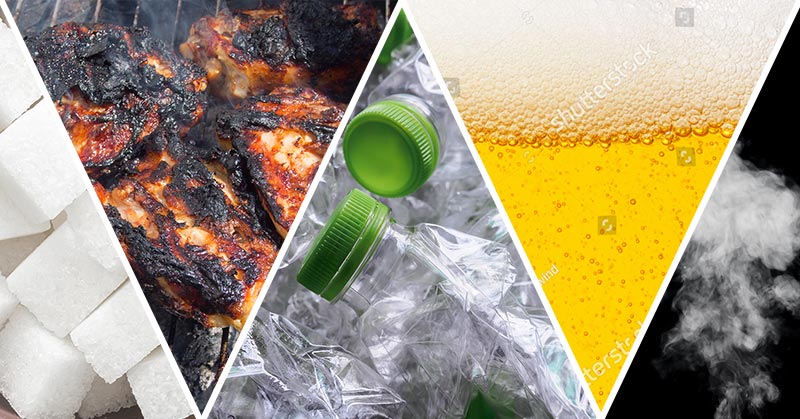What’s going on with the C word. In the last hundred years, cancer rates have truly skyrocketed, and in this day and age, it is believed that everyone either knows cancer personally or by association with friends and family. Rising cancer rates can be partially explained by the fact that we are simply living longer, and truly, cancer risk does increase as we age. However, cancer does not only occur in our older population, and rates are actually increasing in younger generations. This disease isn’t just caused by uncontrollable factors like old age or bad genes; our lifestyle and environment also play major roles in predisposing us to this malicious disease. In fact, genetics actually pay a very small role in comparison to lifestyle when it comes to pathological disease (1).
Cancer fundamentally affects the way our cells grow and divide
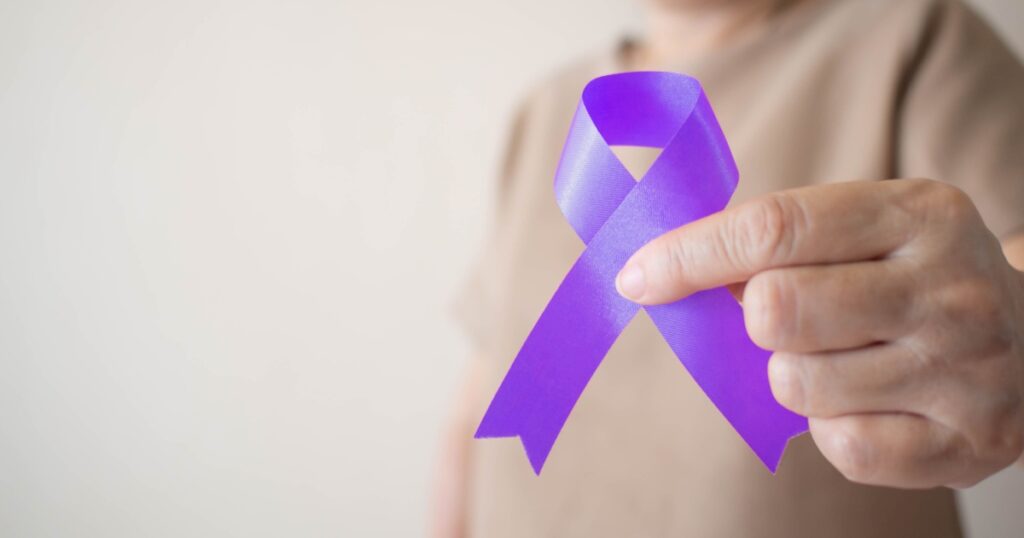
The origins of the word cancer come from the Greek physician Hippocrates (460-370 BC). It was called carcinos or carcinoma, which means, for its resemblance to the crustacean because of cancer’s spreading finger-like projections. This disease damages and mutates cells in perverse ways, and encourages toxic cells to relentlessly grow into unruly tumors. While some cases of cancer are sadly out of our control, we should keep in mind that our daily actions play a definite role in our current and future state of health, and while we should already be aware that sugar, processed meats, and packaged foods, sun tanning, and smoking all have cancer-promoting properties, here are 14 other reasons that cancer rates have skyrocketed:
Read More: Brain Cancer Treatment Shows Promise As Tumor Almost Disappears in 5 Days
1. Exposure to Plastics
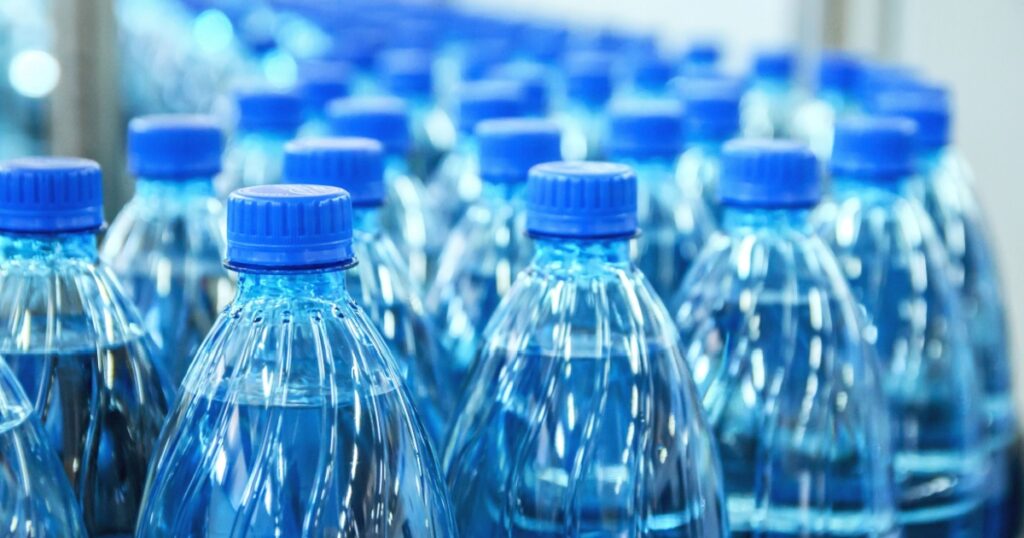
While humans have created great things, we’ve also created some pretty terrible things, such as single-use disposable plastics. These man-made chemical concoctions are designed to be disposed of, however, they never actually break down, and every piece of plastic made still exists somewhere in our world. It’s killing our wildlife, polluting our oceans, and lining our streets, all while damaging our own health too. Plastics can be dangerous, especially when they leach chemicals through scratches or cracks in a container. Even worse would be heating water or food in plastics, as you may just be speeding up the process (2).BPA is a chemical used in the production of polycarbonate plastics. Any leftover BPA that is not consumed in the reaction used to make plastic, has the potential to leach into its contents. Up until recently, it was found in water bottles, cans, baby bottles, and cash register paper rolls, these are all pathways for which BPA can enter the human body.
BPA is a xenoestrogen, which works to mimic estrogen by interacting with estrogen receptors in the body
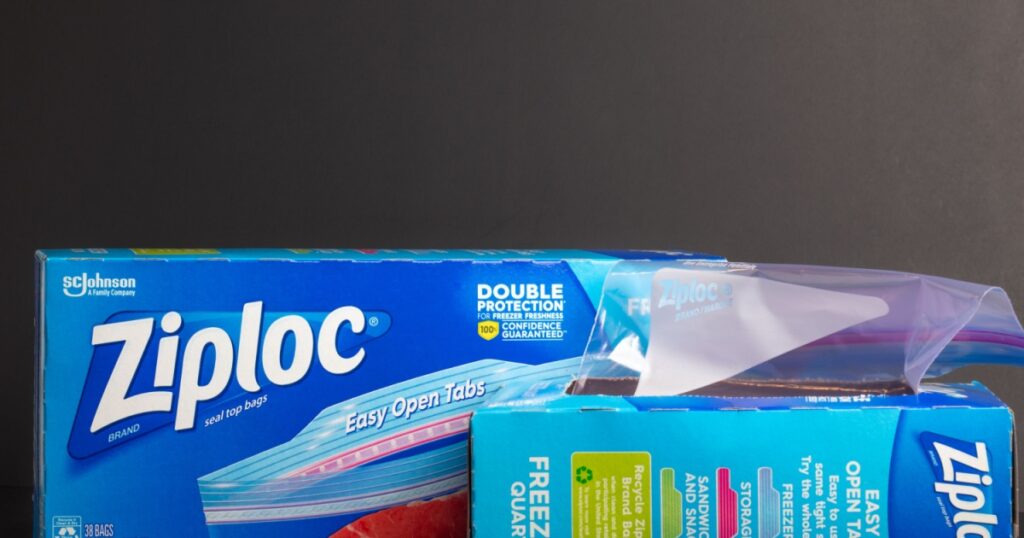
Exposure to BPA has been shown to play a role in the pathogenesis of several endocrine disorders which may include both female and male infertility, precocious puberty, hormone-dependent tumors such as breast and prostate cancer, and several metabolic disorders including polycystic ovary syndrome. (3) When manufacturers put ‘BPA-free’ on the label, this is true. However, they’ve neglected to mention what they’ve substituted for BPA and whether this new material has been tested for the same kinds of problems that BPA has been shown to cause. (4) In fact, there is some concern regarding the safety of BPA analogs being used as substitutes, as some are even more estrogenic than BPA itself (16).
2. Plastic Surgery & Implants

Why does the desire for beauty outweigh our value of health? The number of women developing cancer due to their breast implants is steadily increasing. They’re not causing breast cancer, but rather a malignancy of the immune system called breast implant-associated anaplastic large-cell lymphoma, and the FDA warns as the number of cases continues to grow. We should also consider how other forms of augmentation and injections may manifest in the body. Is it really worth it?
3. Exposure to Toxic Chemicals at Work
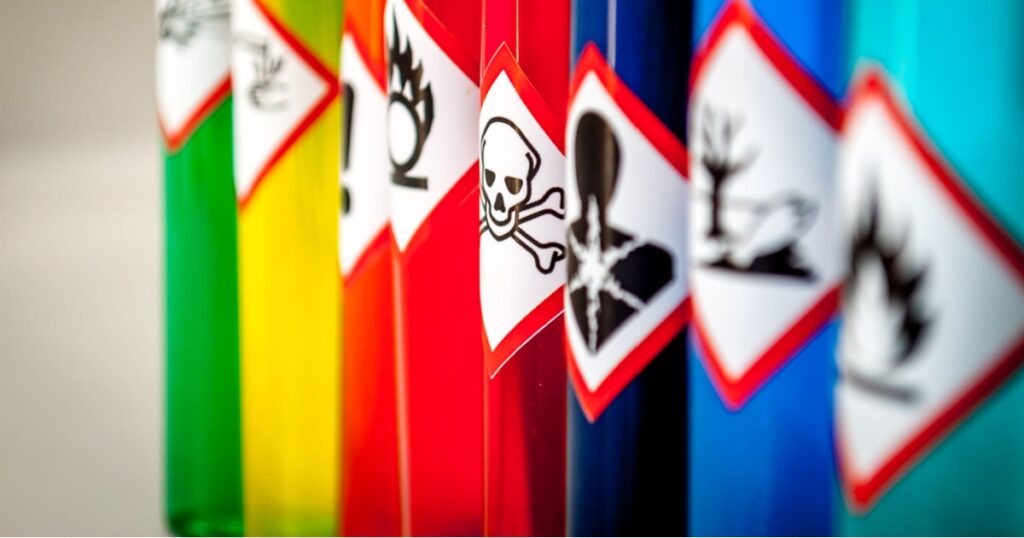
There are many jobs that involve daily exposure to cancer-causing substances. While we don’t need to boycott our 9 to 5, we should be aware of the risks and be proactive about seeking work through companies and businesses that practice sustainability and avoid the use of harsh chemicals. At the very least, having companies that actively work to assess potential hazards and adopt policies that lower the risk put on their employees.
Those at risk for coming in contact with cancer-causing substances on the job include:
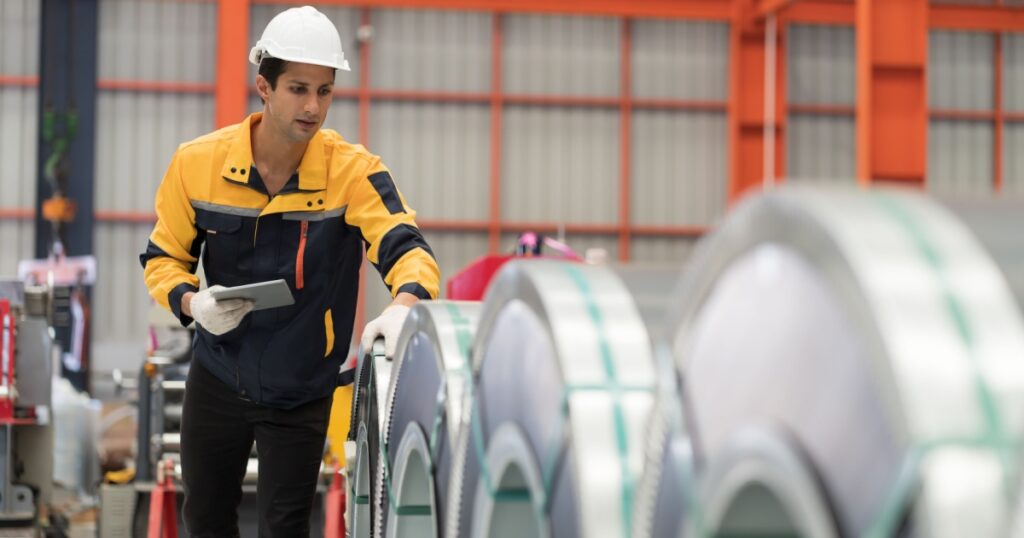
- Aluminum workers
- Workers in seed factories
- Painters
- Tar pavers
- Rubber manufacturers
- Hairdressers who deal with dyes daily
- Nail-salon technicians
4. Working Nights

Who would have thought that working the night shift could increase cancer risk? Scientists believe that working long hours in darkness can mess with the body’s natural circadian rhythm, which includes a disruption in melatonin synthesis – an anticarcinogenic hormone with antioxidative properties. (5)
Read More: New Research Shows Drug Shrunk Up to 70% of Pancreatic Cancer Tumors
5. Barbequed Meats

Can nutrient-dense foods become potentially dangerous, just by the cooking method? While charred foods may be tasty, they can also increase your risk of cancer. When it comes to animal products, even if you’re buying pasture-raised or grass-fed – all muscle meats, when cooked at high temperatures, produce compounds called heterocyclic amines (HCAs), and polycyclic aromatic hydrocarbons (PAHs). According to the National Cancer Institute, HCAs are formed when the amino acids (protein building blocks), sugars, and creatine found in meats react at higher temperatures. PAHs, on the other hand, are formed when the fats and juices from meats drip onto a hot surface. When these juices burn, the smoke created contains PAHs, which then adhere to the meat. These compounds have been found to be mutagenic, which means they could cause changes in our DNA thereby increasing the risk of cancer (6). However, let’s not fret too much. There are ways to reduce the formation of these compounds when you cook or grill them. Check this article out here for more information!
6. Air Pollution
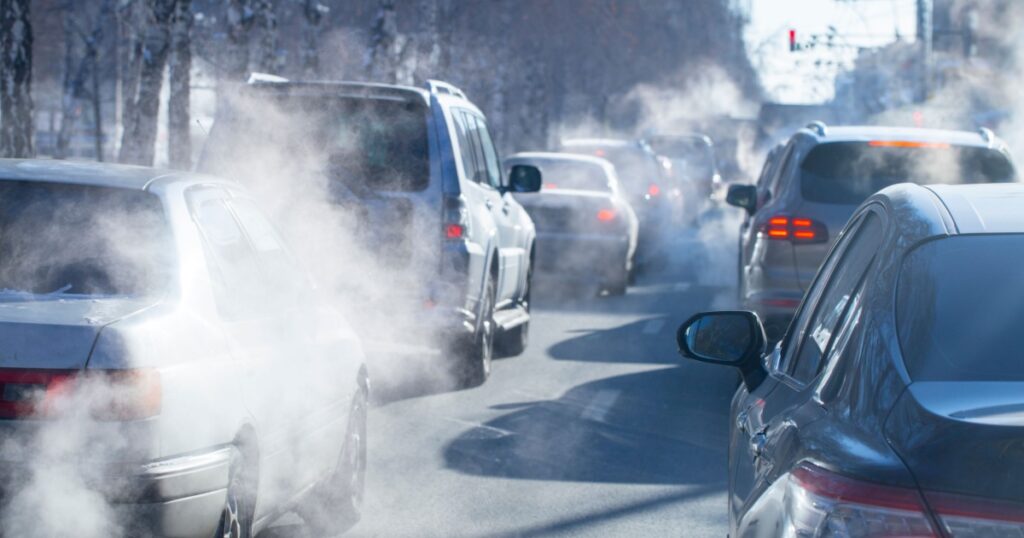
Where would we be without cars? Likely in a less polluted world with fewer cases of cancer. Air pollution is something we cannot avoid, and what makes it worse is that puts a damper on goals for a healthy lifestyle. Even if you’re trying to do good for your body by getting some exercise and hitting the streets for a nice jog, if you’re doing that in a city, it seems a little redundant and counter-intuitive, considering that’s where you’ll find the highest density of vehicle fumes and pollution. It’s not just the cars though, think about cigarette smoke, laundry exhausts, herbicides, pesticides, and all of the other toxic chemicals we inflict on our environment daily. The air we breathe is filled with cancer-causing substances, and outdoor air pollution is a major environmental risk, it affects a majority of our population. (7)
7. Radon Exposure
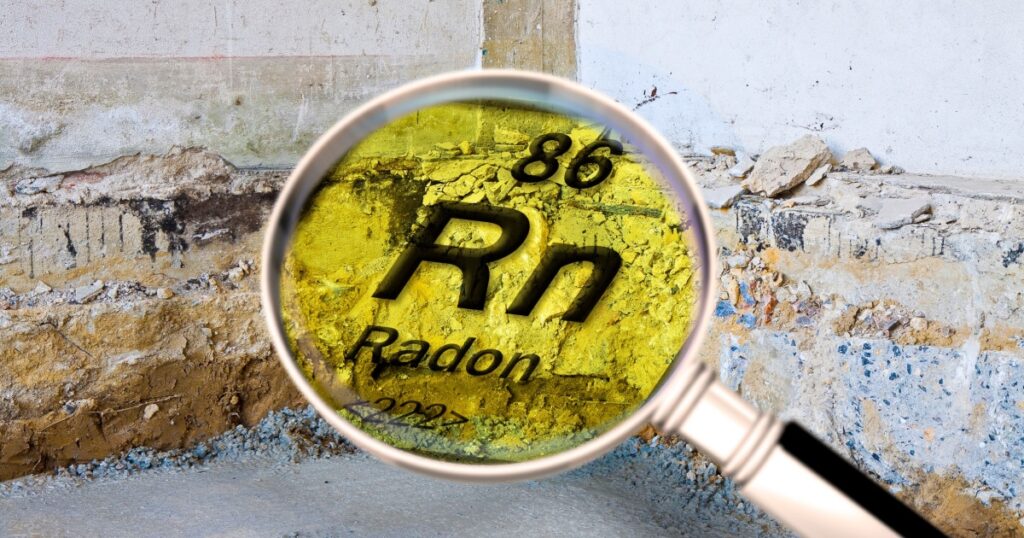
This radioactive gas is released from the normal decay of uranium, thorium, and radium in rocks and soil. It is an invisible, odorless, tasteless gas that seeps up through the ground and diffuses into the air. Radon gas usually exists at very low levels, however, in poorly ventilated areas, people who inhale high levels of radon are at an increased risk of developing lung cancer. (8)
8. Fracking

Public health research hasn’t kept up with the recent boom in fracking. This method of extracting oil and gas from rock involves blasting a cocktail of chemicals, sand, and water into drilled wells. More than a thousand different chemicals are used and released in the process, including formaldehyde. There have been 55 identified cancer-causing chemicals, including 20 that have been shown to increase the risk of leukemia and lymphoma. The Yale Public Health analysis warns that millions of people living within a mile of fracking wells may have been exposed to these chemicals (9)
9. Asbestos
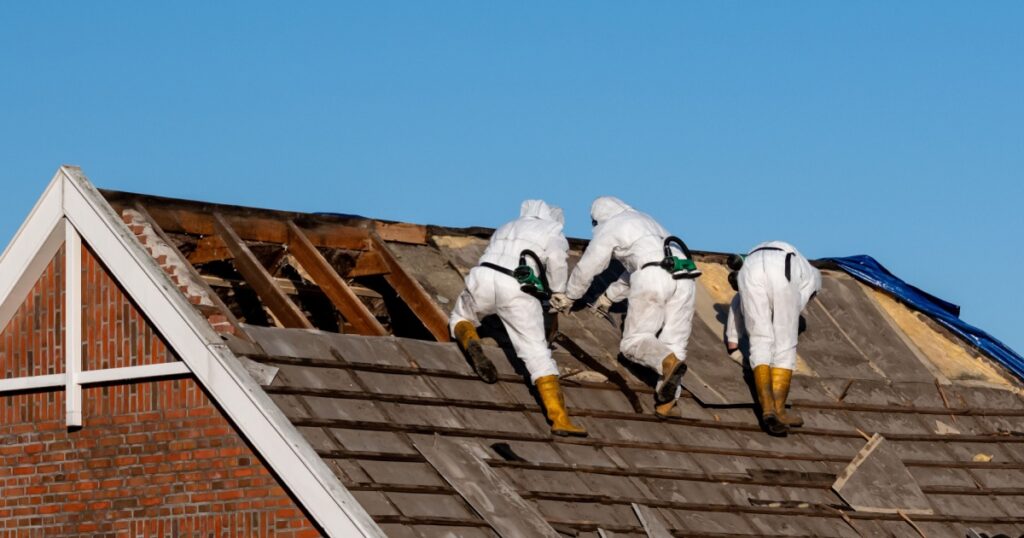
This was once used as insulation before its dust was linked to lung cancer. Asbestos to this day – is still not completely banned in the United States. While the Environmental Protection Agency regulates its use now, asbestos was incorporated into hundreds of household products for more than a century, and it can still be found in roofing products, and in the production of chlorine and lye. (10)
Read More: Israeli Company Claims It Has Created Technology That Can Destroy Cancerous Tumors
10. Weed Killer
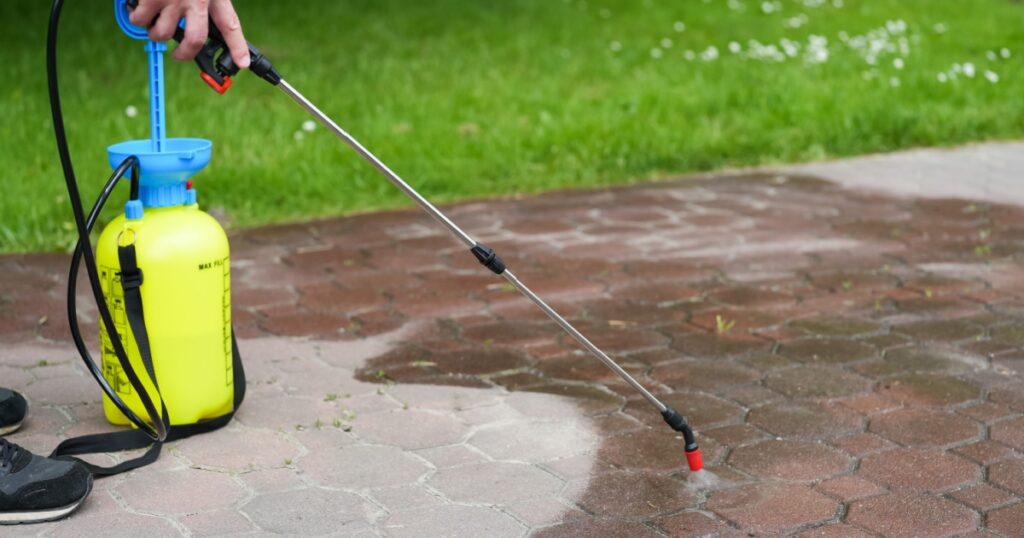
Glyphosate is a common weed killer used by many farmers; you’ll recognize it as the active ingredient in Monsanto’s/Bayer Roundup. Glyphosate may be one of the most common pesticides used on crops in the US, is linked with higher rates of non-Hodgkin lymphoma in farmers and gardeners. While Monsanto has long argued that Roundup is safe and not linked to cancer, there was a case in 2014 where a former pest control manager for an area school in San Francisco developed this incurable non-Hodgkin’s lymphoma.
Dewayne Johnson would spray Roundup at a handful of schools and sports fields
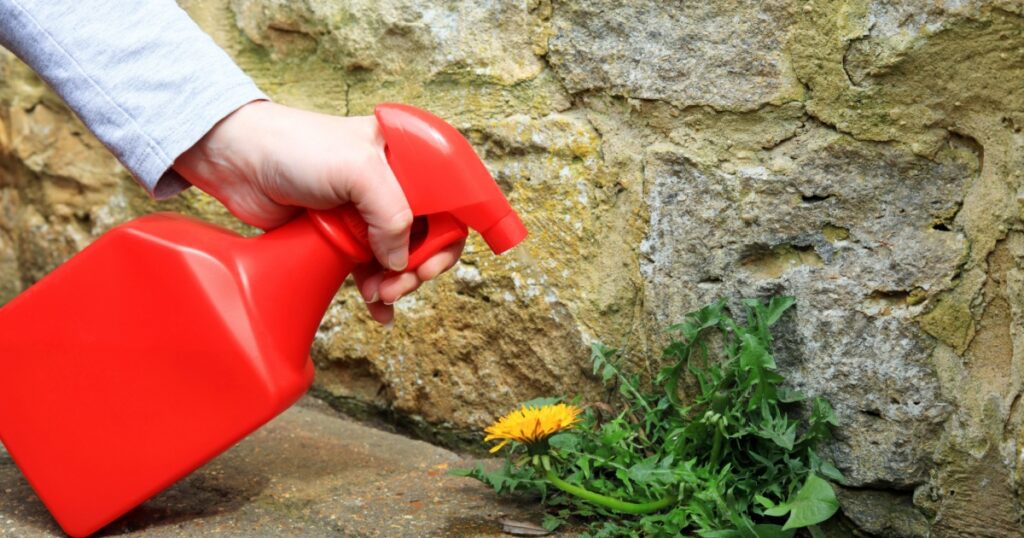
He was never concerned about the health hazards, given that Monsanto’s labels had no warning. He was even told in training that it was “safe enough to drink”. He followed the label instructions diligently, reading them every time he sprayed. He even wore protective gear while spraying to be extra cautious. In 2014, after about two years of regular use, he started to experience rashes and other forms of skin irritation, and he knew something was wrong. Soon, he had marks on his face and frightening lesions throughout his body, and doctors struggled at first to understand what was happening to him. Eventually, he learned the truth: it was cancer, and it was killing him.
This Monsanto trial was historic
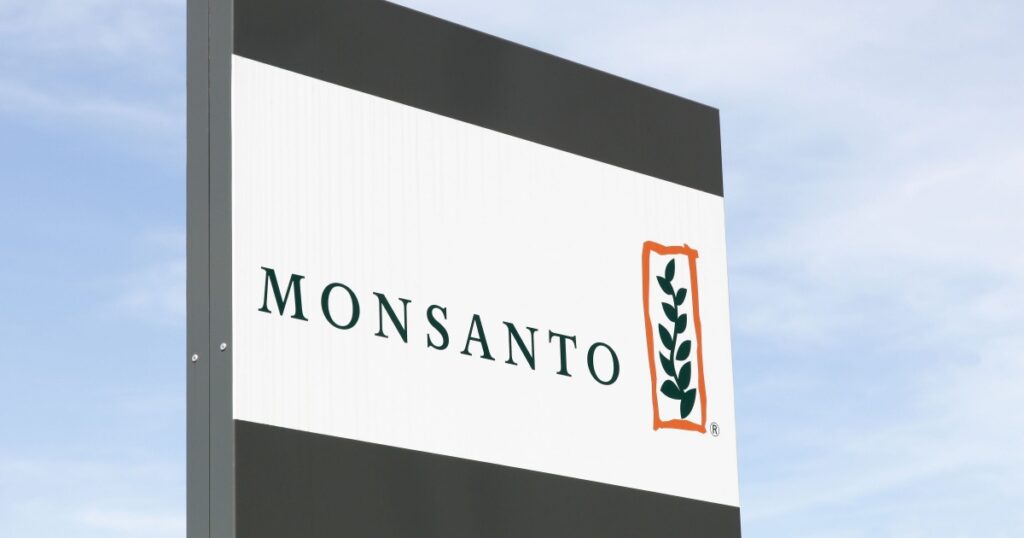
Dewayne Johnson was the first person to take Monsanto to trial on allegations that the global seed and chemical company spent decades hiding the cancer risks of its herbicide. He is also the first to win and was awarded 78 million dollars. Since this trial, there have been more than 13,000 similar suits, which have popped up in the US. While Monsanto will continue to argue that there’s no evidence that their chemicals cause cancer, why risk spraying such a controversial cocktail on our planet? When has it ever been smart for consumers to trust a mega-corporation driven solely by financial income, with no heart for the planet, plants, animals, and people? Not only is it making farmers sick, but it’s threatening bees and monarch butterflies too (11,17).
11. Wood dust

Regular inhalation of dust while working with wood may make you more likely to develop cancers of the sinus and nasal cavity than the average person (12)
12. Birth Control Pills
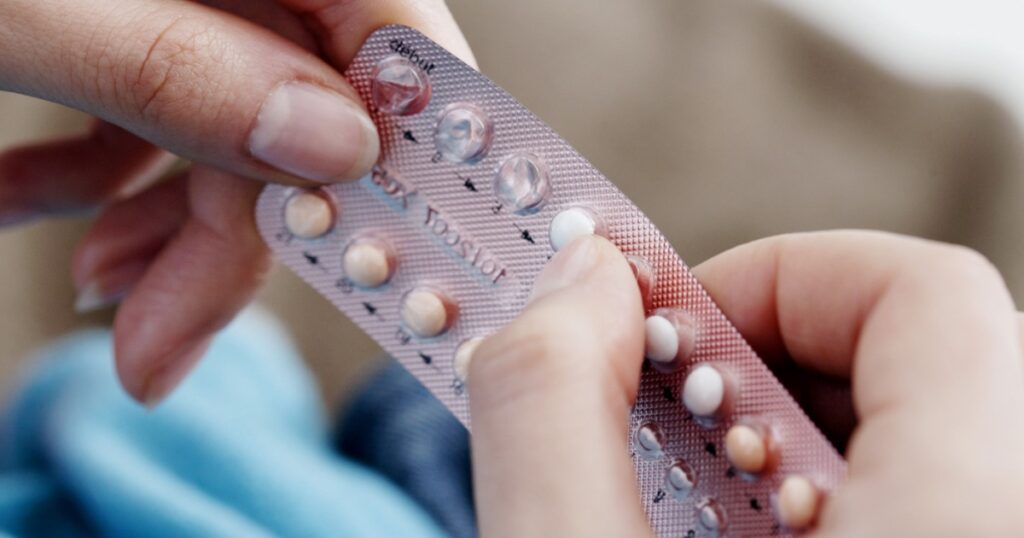
While taking birth control pills can prevent unwanted pregnancies, and regulate a woman’s cycle, taking synthetic estrogens/progesterone may also increase a woman’s risk of developing breast and cervical cancers. (13) For more info, visit Cancer.org.
13. Chronic Inflammation
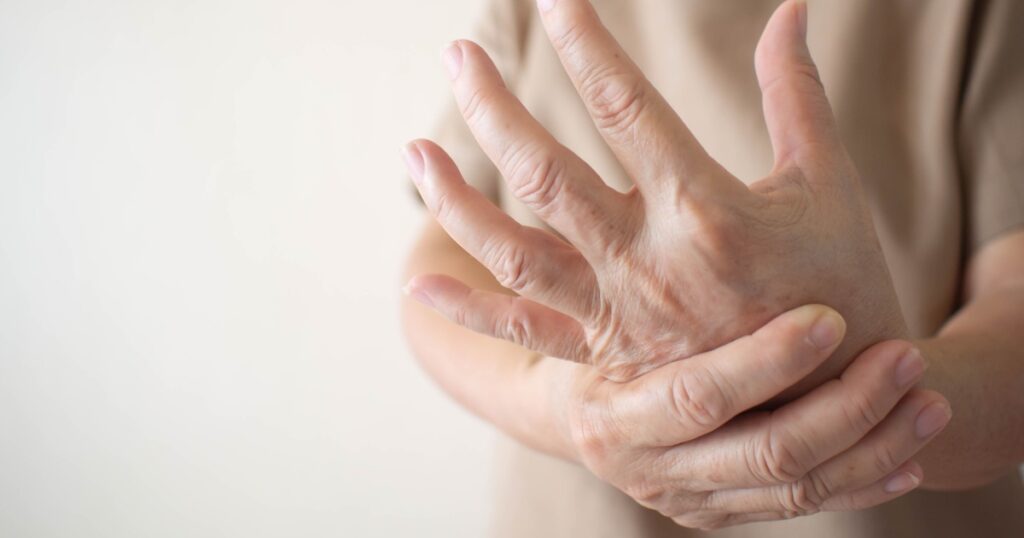
Inflammation is the root of all diseases, and unaddressed chronic inflammation from things such as long-term infections, bowel disease, or obesity can all damage a person’s DNA and lead to higher cancer rates. (14)
Read More: 6 early warning signs of Anal Cancer everyone is too embarrassed to talk about
14. Cosmetics
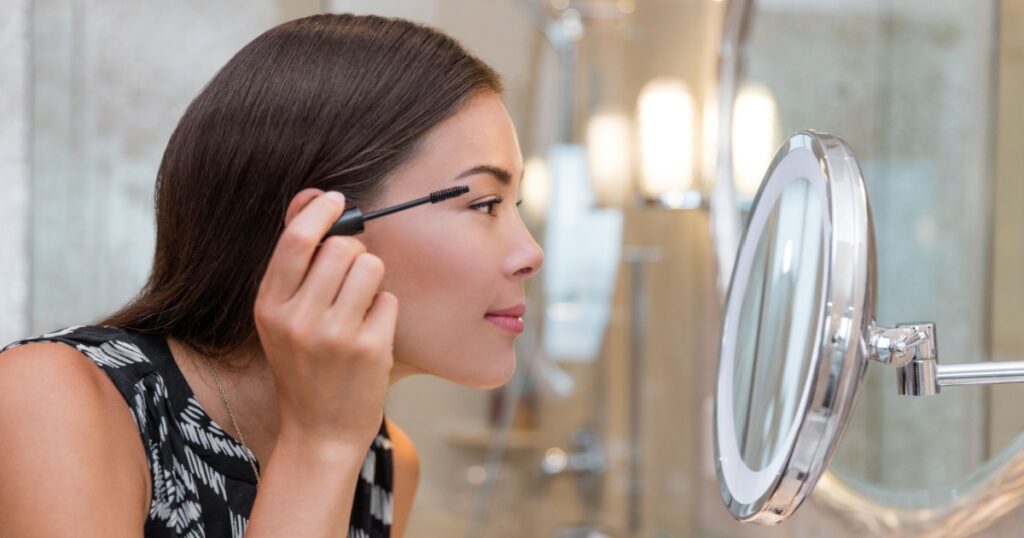
Laws governing cosmetics and personal care products are so limited that there are known cancer-causing chemicals that are legally allowed in our personal care products. U.S. researchers report that one in eight of the 82,000 ingredients used in personal care products are industrial chemicals, including carcinogens, pesticides, reproductive toxins, and hormone disruptors. (15) How many of these 13 cancer-causing actions are you exposed to? While there are many things in life that we cannot control, such as the overall quality of the air that we breathe, whether or not other people litter, spray their lawns with chemicals, leave their car’s idling, or burn your burger at a block party. There are plenty of things that you can control. A well-known analogy often used in the holistic health community is what’s referred to as ‘the barrel effect’. Illness is not just a result of a few simple factors and genetics, it is often a result of several or even hundreds of compounding factors which build to manifest disease.
Theoretically consider your body like a barrel
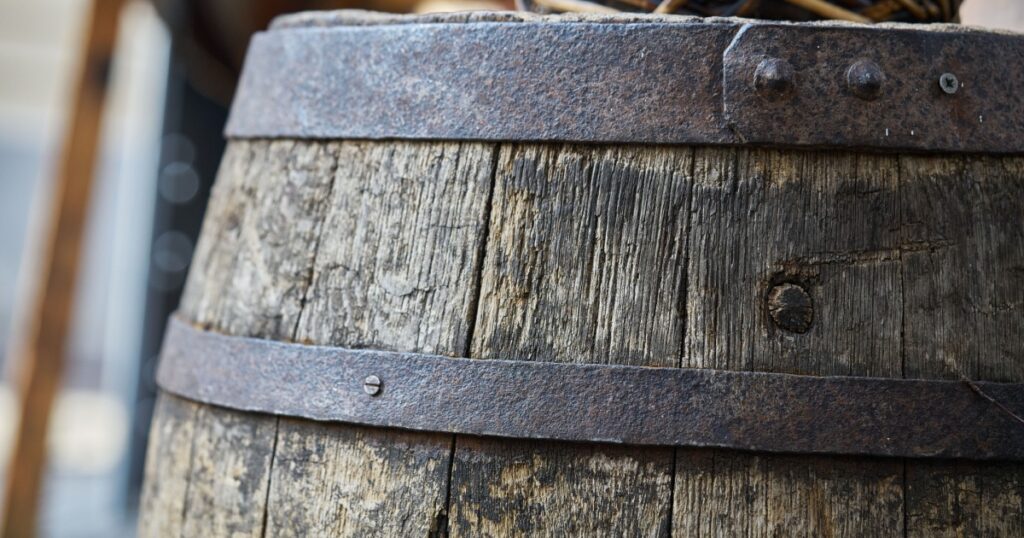
When you were first conceived, your barrel was just about empty, while there were likely toxins that passed through the umbilical cord before you were even born, generally speaking, this is your only example in the life of a truly clean slate. Now, we are all born with this “barrel”, and some of us have bigger barrels than others, however, we don’t know how large our barrel is until it begins to overflow and illness and disease make their entrance. We fill this barrel daily, with the environmental toxins that we’re exposed to, poor diet choices, pollution, electromagnetic fields, medication and drugs, viruses and pathogens, and mental and emotional stress. While there is not one cause for cancer, we should remember the analogy of the barrel effect, while you may not be able to control parts of your environment, you do have control of what you fuel your body with, rub on your skin, what cleaning products you use in your home, whether or not you choose to smoke or drink daily.
The Bottom Line

If you’re seeking good health, not just a quick-fix diet or fad. Then be proactive about creating your well-being, and aim to be conscious about your toxin exposure, this is a thought that should cross your mind every day. What can you do differently, how can you improve, and how can you further reduce your toxin exposure?
Read More: Is Broccoli Better Than Cauliflower? The Real Truth About Cancer Risk, Heart Health and More
Sources
- The Links Between Environmental Factors, Genetics, and the Development of Cancer
https://www.ncbi.nlm.nih.gov/books/NBK220897/ - Bisphenol A is released from polycarbonate drinking bottles and mimics the neurotoxic actions of estrogen in developing cerebellar neurons. https://www.ncbi.nlm.nih.gov/pubmed/18155859
- Health risk of exposure to Bisphenol A (BPA) https://www.ncbi.nlm.nih.gov/pubmed/25813067
- BPA-Free Plastic Containers May Be Just as Hazardous https://www.scientificamerican.com/article/bpa-free-plastic-containers-may-be-just-as-hazardous/?redirect=1
- Night shift work and cancer risk: a literature review https://www.ncbi.nlm.nih.gov/pubmed/21870422
- Chemicals in Meat Cooked at High Temperatures and Cancer Risk https://www.cancer.gov/about-cancer/causes-prevention/risk/diet/cooked-meats-fact-sheet
- World Health Organization: Outdoor Air Pollution Causes Cancer https://www.cancer.org/latest-news/world-health-organization-outdoor-air-pollution-causes-cancer.html
- Radon and Cancer https://www.cancer.gov/about-cancer/causes-prevention/risk/substances/radon/radon-fact-sheet#q2
- Fracking tied to cancer-causing chemicals https://www.ncbi.nlm.nih.gov/pmc/articles/PMC5235941/
- Why Isn’t Asbestos Banned in the United States? https://www.asbestos.com/blog/2012/09/17/why-isnt-asbestos-banned-in-the-united-states/
- Active ingredient in Monsanto’s Roundup hurts honey bees https://www.ehn.org/monsanto-herbicide-roundup-hurts-bees-2607605097.html?rebelltitem=1#rebelltitem1
- Wood Dust Carcinogen https://www.cancer.gov/about-cancer/causes-prevention/risk/substances/wood-dust
- Birth Control & Cancer: Which Methods Raise, Lower Risk https://www.cancer.org/latest-news/birth-control-cancer-which-methods-raise-lower-risk.html
- Feeling the heat – the link between inflammation and cancer https://scienceblog.cancerresearchuk.org/2013/02/01/feeling-the-heat-the-link-between-inflammation-and-cancer/
- “The Dirty Dozen” cosmetic chemicals to avoid https://davidsuzuki.org/queen-of-green/dirty-dozen-cosmetic-chemicals-avoid/
- https://www.ncbi.nlm.nih.gov/pmc/articles/PMC6387873/
- https://www.nrdc.org/save-monarch-butterflies
Disclaimer: This information is not intended to be a substitute for professional medical advice, diagnosis or treatment and is for information only. Always seek the advice of your physician or another qualified health provider with any questions about your medical condition and/or current medication. Do not disregard professional medical advice or delay seeking advice or treatment because of something you have read here.
